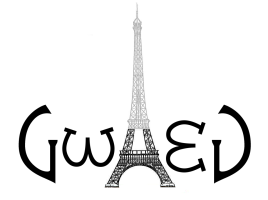Description
Scribe: Antoine Kouchner
Dr
Derek Fox
(Pennsylvania State University)
19/05/2009 09:00
I will discuss the experiences of multiwavelength observers of gamma-ray bursts, both historically and since the afterglow revolutions of 1997 (long bursts) and 2005 (short bursts). Looking ahead to the coming era of gravitational-wave and high-energy neutrino (GWHEN) astronomy, I believe the experiences of gamma-ray burst observers will have direct relevance to the GWHEN community, whether...
M.
Frederic Piron
(CNRS/IN2P3/LPTA)
19/05/2009 09:30
Since its successful launch on June 11th, 2008, the Fermi Gamma-Ray Space Telescope has detected gamma-ray emission from Gamma-Ray Bursts (GRBs) spanning a very broad spectral range, from below 10 keV with the Gamma-ray Burst Monitor (GBM) up to more than 10 GeV with the Large Area Telescope (LAT). We will present the results of the combined analysis of GRBs that have been detected by both...
Prof.
Guido Chincarini
(INAF - Astronomical Observatory Brera)
19/05/2009 10:00
Dr
Stephanie Escoffier
(CNRS/IN2P3/CPPM)
19/05/2009 10:45
Gamma-ray bursts (GRBs) are powerful cosmic particle accelerators producing a highly variable flux of high energy gamma-rays. Under the assumption of hadronic acceleration in jets, a copious flux of neutrinos can be expected. Among the possible astrophysical sources, GRBs offer one of the most promising perspectives for the detection of cosmic neutrinos thanks to an almost background free...
Dr
dafne guetta
(Osservatorio Astronomico di Roma)
19/05/2009 11:15
Merging binary systems consisting of two collapsed objects are among the most promising sources of high frequency gravitational wave, GW, signals for ground based interferometers. Double neutron star or black hole/neutron star mergers are also believed to give rise to short hard bursts, SHBs, a subclass of gamma ray bursts. SHBs might thus provide a powerful way to infer the merger rate of...

